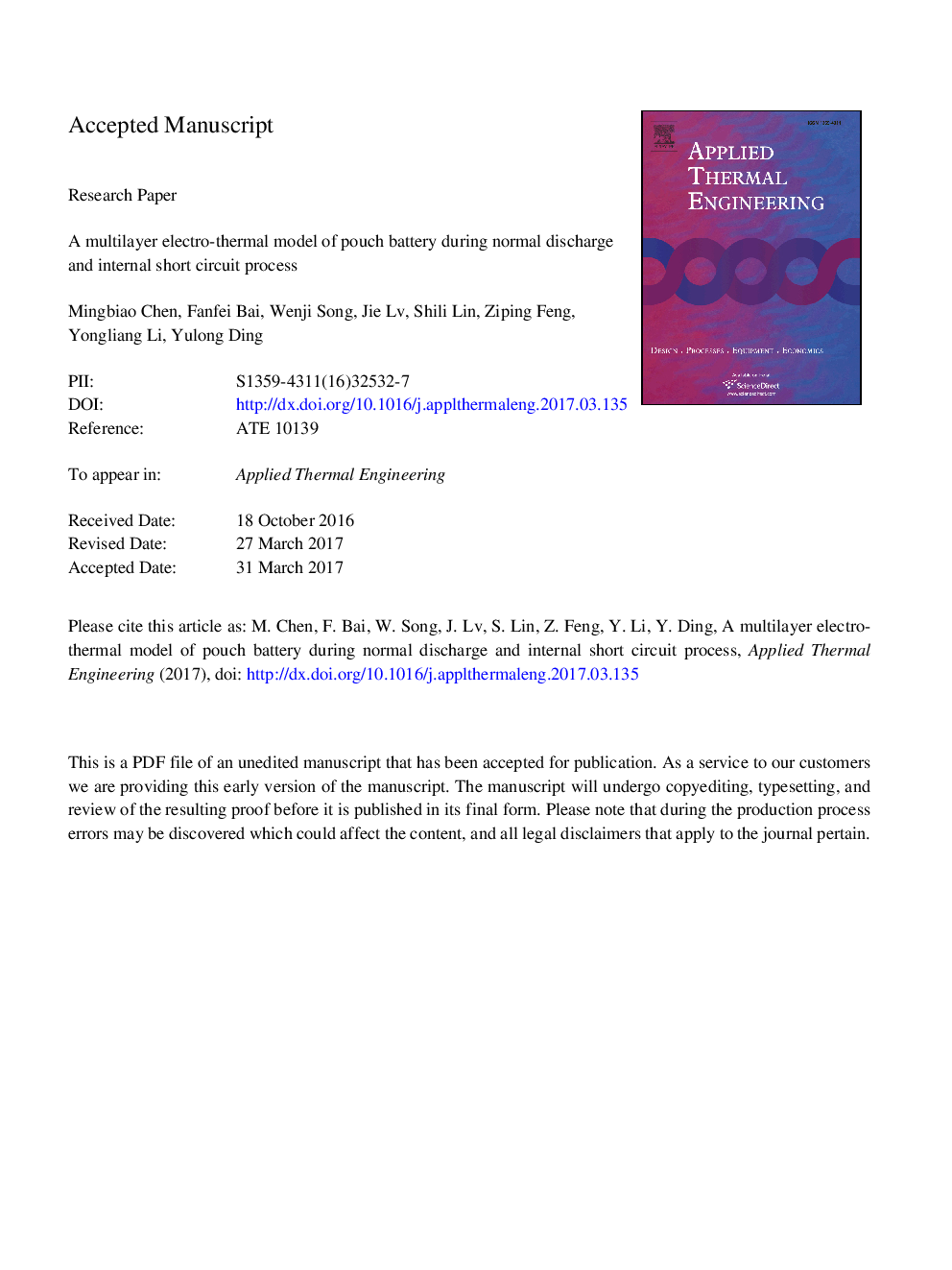| Article ID | Journal | Published Year | Pages | File Type |
|---|---|---|---|---|
| 4991028 | Applied Thermal Engineering | 2017 | 36 Pages |
Abstract
As the electrical and thermal characteristic will affect the batteries' safety, performance, calendar life and capacity fading, an electro-thermal coupled model for pouch battery LiFePO4/C is developed in normal discharge and internal short circuit process. The battery is discretized into many cell elements which are united as a 2D network equivalent circuit. The electro-thermal model is solved with finite difference method. Non-uniformity of current distribution and temperature distribution is simulated and the result is validated with experiment data at various discharge rates. Comparison of the lumped model and the multilayer structure model shows that the temperature non-uniformity Φ of multilayer model is bigger than that of lumped model and shows more precise. The temperature non-uniformity is quantified and the reason of non-uniformity is analyzed. The electro-thermal model can also be used to guide the safety design of battery. The temperature of the ISC element near tabs is the highest because the equivalent resistance of the external circuit (not including the ISC element) is the smallest when the resistance of cell units is small. It is found that increasing the thermal conductivity of integrated layer can effectively relieve the heat spot effect of ISC.
Related Topics
Physical Sciences and Engineering
Chemical Engineering
Fluid Flow and Transfer Processes
Authors
Mingbiao Chen, Fanfei Bai, Wenji Song, Jie Lv, Shili Lin, Ziping Feng, Yongliang Li, Yulong Ding,
